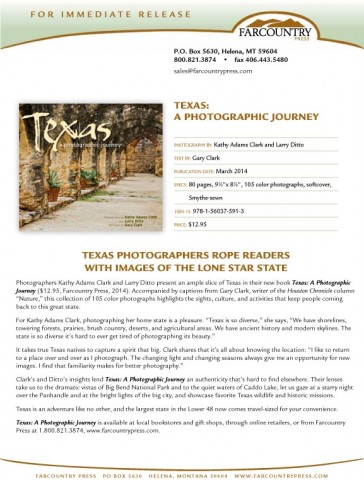I have some exciting news to share with you this week. Kathy Adams Clark, her husband, Gary and I have partnered on a new book from Far Country Press called “Texas – A Photographic Journey”. You can find it on Amazon or at Barnes & Noble, Costco and many of the state’s other book stores and nature centers. Take a quick look at the promotional ad below and consider adding this one to your library. Reading it will be like taking a trip across Texas to see our cities, historic sites, and natural wonders.
Several mornings this past week, I visited a nearby south Texas ranch to photograph wild turkeys as their mating season begins. The weather was fantastic and, as always, the ranch country was beautiful at sunrise.
Now, here are some of the photos from last week’s ranch trips: Just click on the right side of a photo and it will open in a larger, sharper format. There are “next” and “previous” arrows on the sides to advance help you advance through the images.
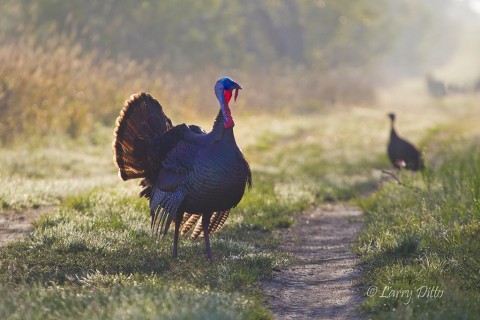
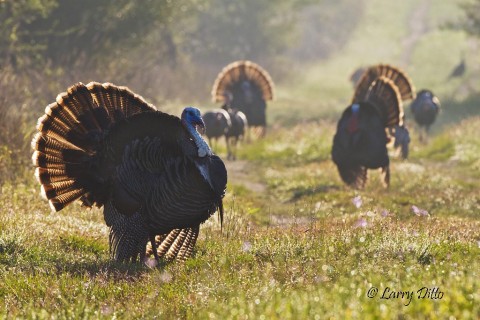
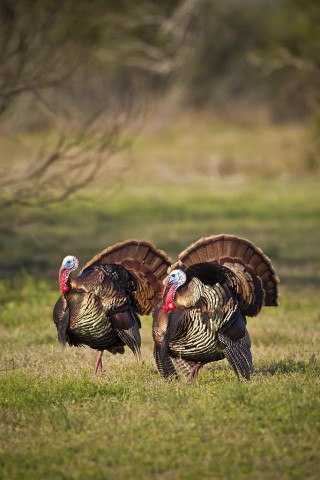
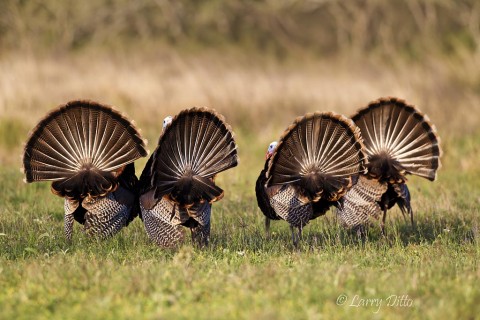
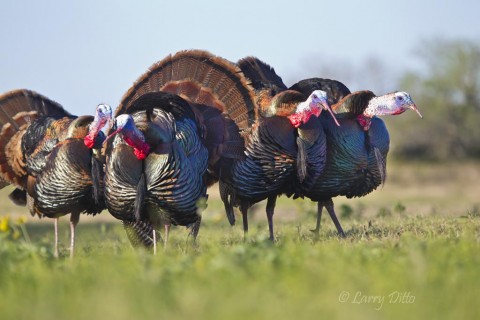
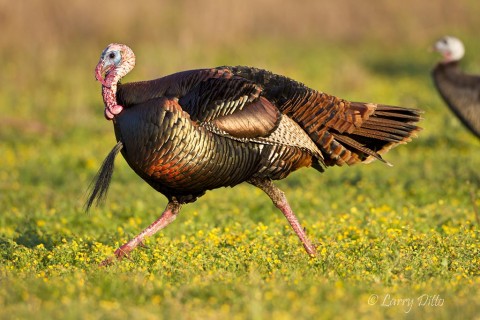
Notice that most of these images were made at ground level either hand-holding the 100-400 mm lens and camera or sitting in the grass with the big 500 mm lens and camera on a shortened tripod. This low perspective always brings the viewer into a more personal relationship with the image. It’s almost like being another turkey in the flock. * I know…some of you are saying “another turkey is right in this case”.
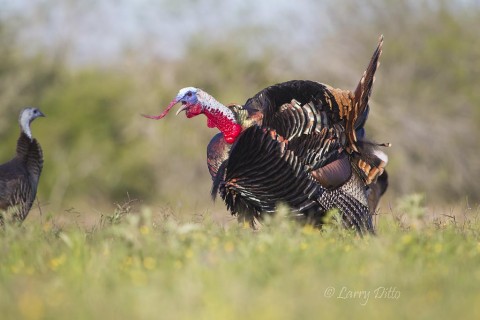
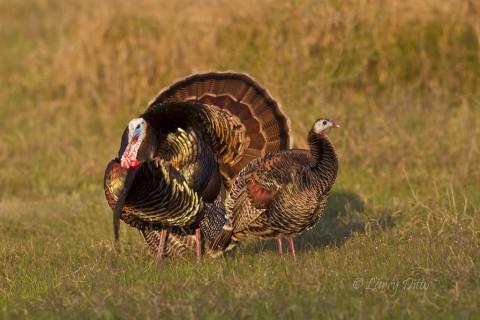
In case you never noticed, male turkeys have black-tipped covert (body) feathers and females have buff-tipped feathers. This certainly gives the females some advantage of camouflage while nesting . Of course, they are ground nesters like their cousins the quail, chickens, pheasants and such.
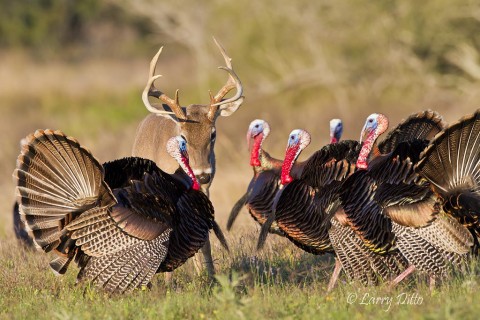
The buck deer and the gobblers seemed to enjoy this confrontation. Mostly, it was posturing, but the turkeys did try hitting their victim with those powerful wings until they realized he wasn’t backing down.
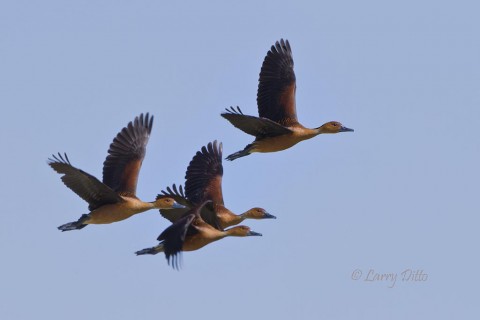
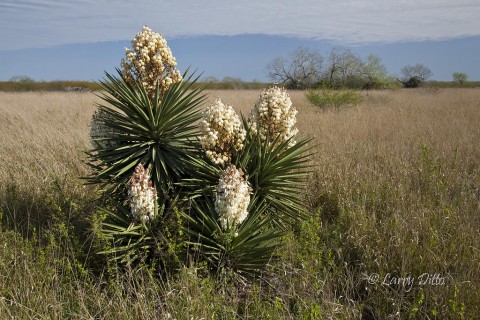
While roaming the ranch last week (right after a cold front passed), I saw a mesquite tree full of male Baltimore orioles. So, the spring migration has begun for many species.
Hope you enjoyed this time with the flock.
Larry

